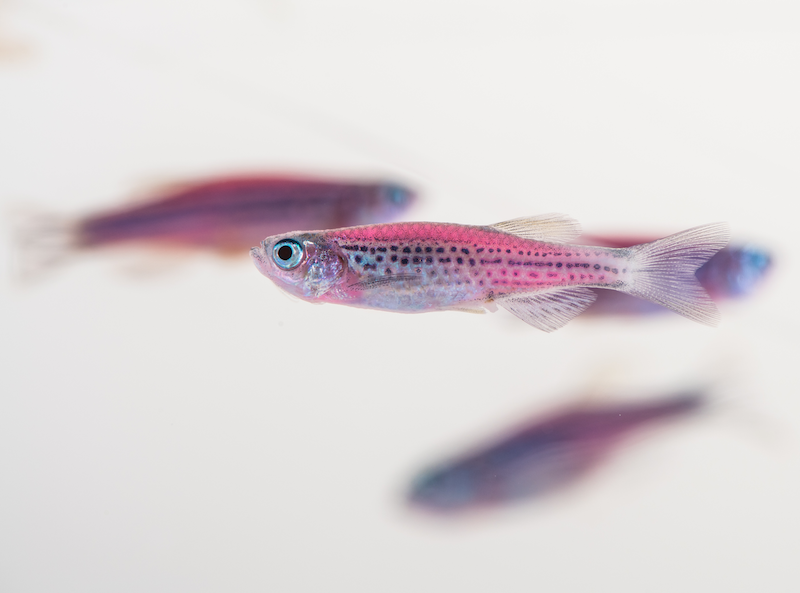U-M researchers are using the regenerative properties of zebrafish to develop novel strategies for treating blinding eye diseases.

The tiny zebrafish may hold the key to slowing or even reversing eye diseases that affect millions of people, especially our aging population. The reason for this is that zebrafish, unlike mammals, are able to regenerate an injured or diseased retina. Understanding how zebrafish accomplish this amazing feat may suggest novel strategies for stimulating retinal repair in mammals.
The laboratory of Daniel Goldman, Ph.D., a professor at U-M’s Neuroscience Institute and in the Department of Biological Chemistry, has uncovered strategies that zebrafish use to regenerate a damaged retina. Goldman thinks this information may one day help doctors repair damaged or diseased retinas in humans.
Goldman’s research focuses on unraveling the cellular, molecular and biochemical mechanisms that drive and allow Muller glia reprogramming in the injured zebrafish retina. Goldman, along with postdoctoral fellows Jin Wan, Rajesh Ramachandran and Xiao-Feng Zhao, recently discovered that Wnt and heparin-binding epidermal-like growth factor (HB-EGF) signaling play a critical role during retina regeneration. Blocking the action of either of these molecules prevents retina regeneration.
When a zebrafish’s retina is damaged, Wnts and HB-EGF are released and set in motion a series of changes that cause certain retinal cells called Muller glia to revert to a stem-cell state. When they’re in this state, they can generate new cells that repair the damage done to the retina.
Remarkably, the researchers found that either HB-EGF or activation of the Wnt signaling pathway was sufficient to convert Muller glia to a stem cell—even in fish with uninjured eyes.
“The next step will be to explore if these factors and related pathways can stimulate Muller glia dedifferentiation and stem cell formation in mammals,” Goldman says.
The zebrafish offers many advantages for researchers, including its rapid development, transparent embryos that facilitate visualization of developing structures, and its amenability to genetic and pharmacological screens. Importantly for Goldman’s research, the zebrafish retina develops and functions in a similar fashion as the human retina.
In addition to regenerating a retina, zebrafish also regenerate damaged hearts, fins, spinal cord and brain.
Zebrafish are increasingly being used to study various cancers, birth defects and muscular dystrophy—many of which are being studied right here at the University of Michigan, including Goldman’s earlier work with zebrafish on the genetic cause of multiple birth defects affecting kidneys, eyes and other organs.
Additional information about Dr. Goldman’s research is available on his faculty website.